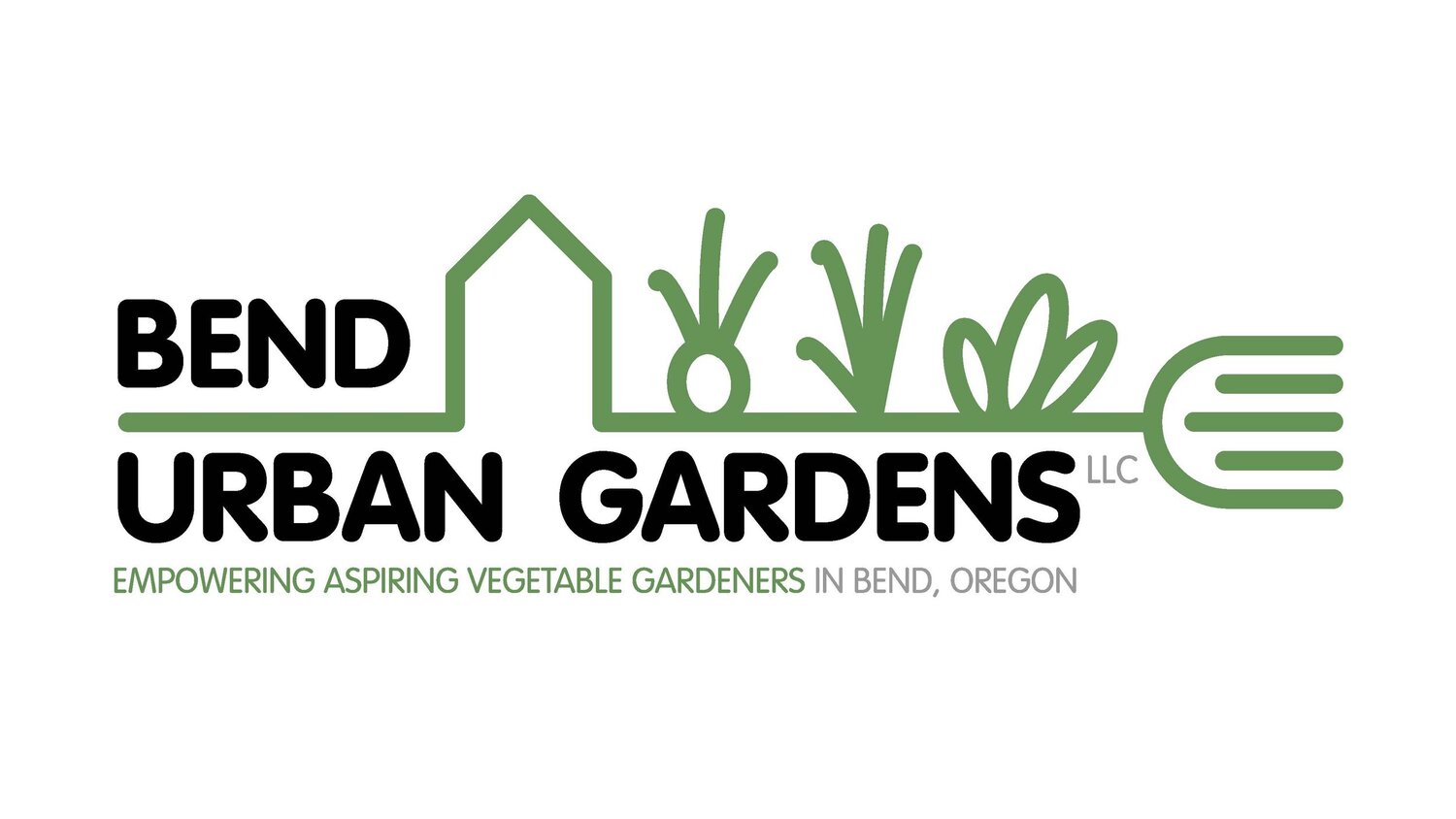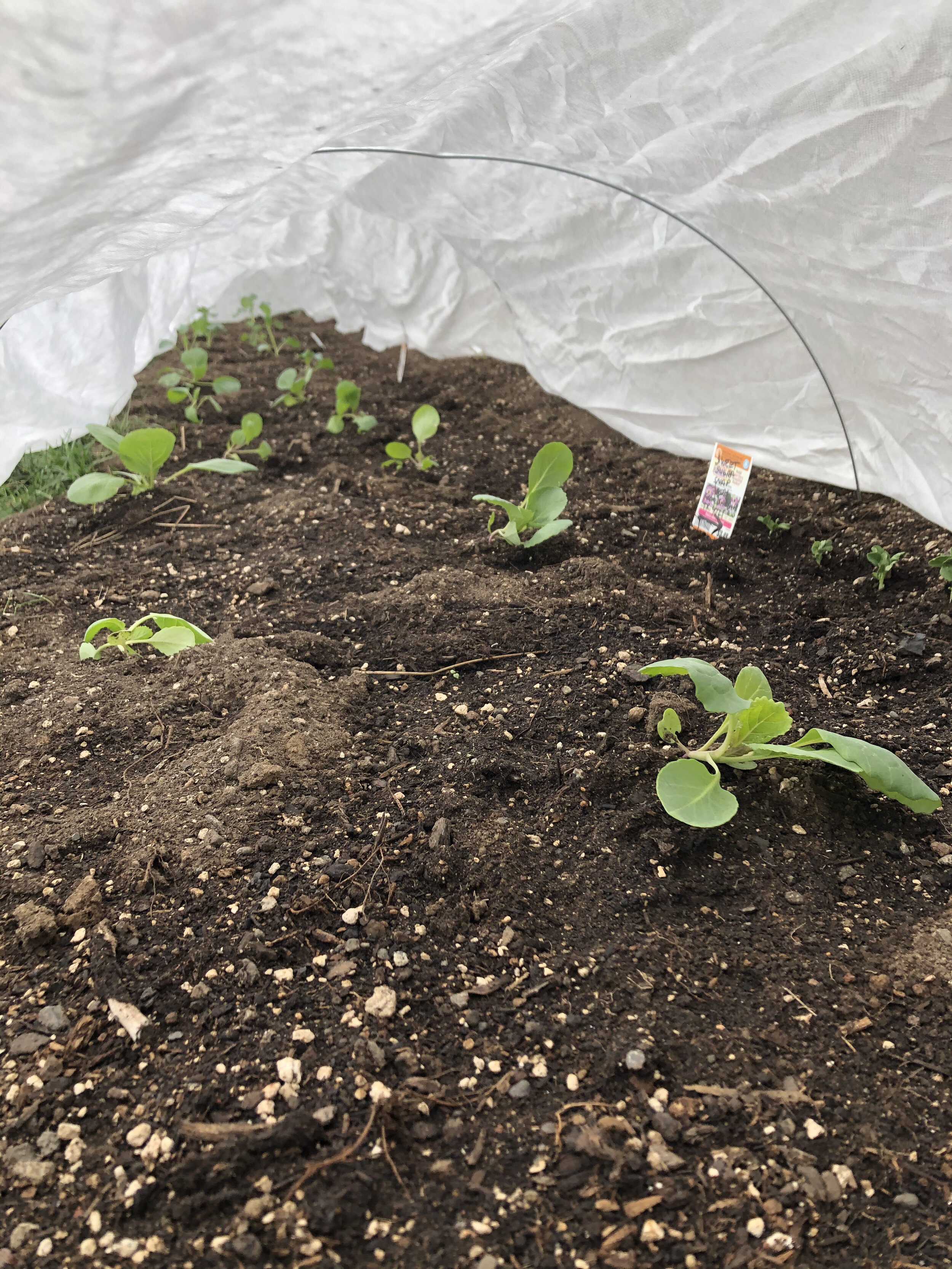How early can we plant vegetables in Bend?
Have you heard to wait to plant your garden until the snow is melted from the top of Black Butte? In our experience, this is not entirely accurate.
There are so many different microclimates in our region. Maybe your garden is surrounded by lava rocks or you have gravel pathways, which can help retain heat. Or maybe your garden is located in a “banana belt,” like in midtown Bend. Or maybe you are in a low spot or way up on Awbrey Butte or up Century Drive where it tends to be cooler. It takes some time and experimenting with the boundaries of your unique spot to really determine how early you can plant to have success. And once you think you’ve discovered a trend after a few seasons, we may get a super warm spring or a really late frost and you wish you would’ve planted earlier or later! Oh, the joys and challenges of our climate!
We seeded spinach and radishes in our mini hoophouses and covered them with row cover at the end of March 2020. It was cooler for us, though, in March 2021, so we waited until 4/17 to sow our earliest successions outdoors in 2021.
In mid-April, in our microclimate with a lava rock wall surrounding our yard and gravel pathways, while also located in a warmer part of town, we can typically transplant broccoli and cabbage and cover them with row cover, which protects them down to 28 degrees while still letting sunlight in. Since we use in-line emitter line to water them, we can just leave the row cover on!
The row cover also helps keep cabbage moths away and offers some hail protection! Sometimes we replant because they don’t all make it, but this early start typically means we have heads of broccoli to harvest by June!
The real question to ask to determine when to start planting is: What is your soil temperature? If your soil temperature is consistently 45-50 degrees (like multiple mornings in a row in late March - early May), brassica family plants like kale, kohlrabi, arugula, radishes, bok choy, mustards, mizuna, tatsoi, and hakurei turnips can all be direct sown along with peas, salad mix, spinach, carrots, and beets. Broccoli and cabbage seeds typically prefer warmer soil temperatures to germinate, so we recommend transplanting them to get an earlier start.
Just know that even if your soil temperature is 45 degrees and that is the minimum temperature your seeds need to germinate, they may take closer to the higher end of that crop’s typical days to germination scale. For example, carrot seeds typically germinate in 6-21 days. If your soil temperature is on the cooler end, it could take 3 weeks for them to germinate! So, if you’d prefer to wait until the soil temperature is a little bit warmer, then your seeds may take fewer days to germinate and you will have less babysitting to do to keep the top of your soil nice and moist to encourage germination.
If you use season extension techniques, like covering your garden beds with row cover/frost cloth and/or greenhouse plastic, you can help warm up your soil more quickly in the spring and also protect your seedlings once they start to grow by keeping them warmer at night to reduce the drastic temperature swings we experience in the high desert.
But, PLEASE, do wait until June 1, or even mid-June in some places, to plant your cold sensitive plants (which is likely, yes, when the snow will be gone off Black Butte). We look at the 10 day forecast to be sure we won’t be dipping down below freezing right after we transplant.
If using walls of water or mini hoophouses, you can often get away with planting cold sensitive crops in mid-May in many parts of Bend, but be prepared with back-up plants and cover them with row cover (sometimes in addition to your plastic if you have a hoophouse) to keep them as warm as you can. It’s also nice to let your plants hang out for at least a few days in their pots in the conditions where they will be transplanted so they can acclimate a little bit before getting planted in their new homes.






